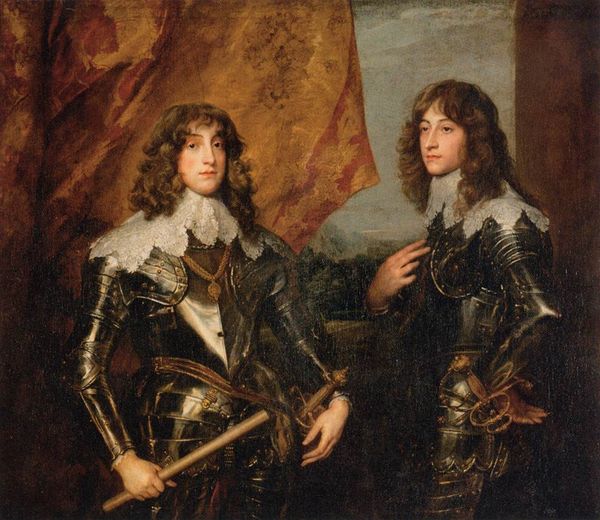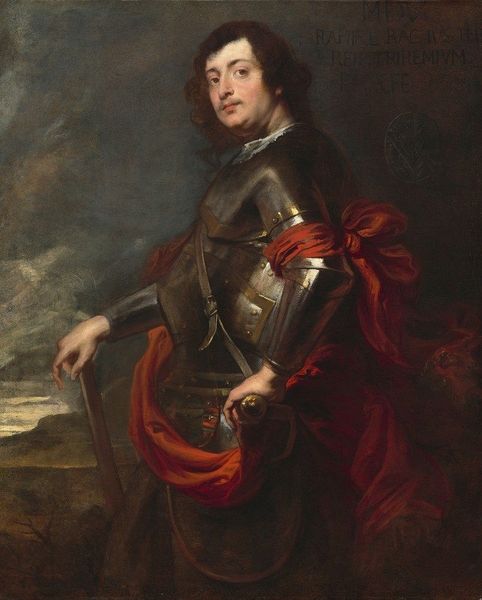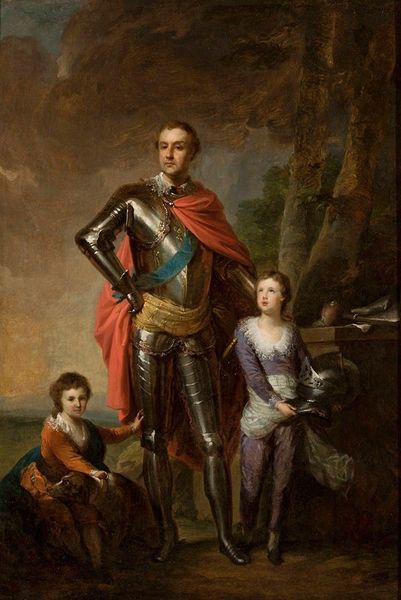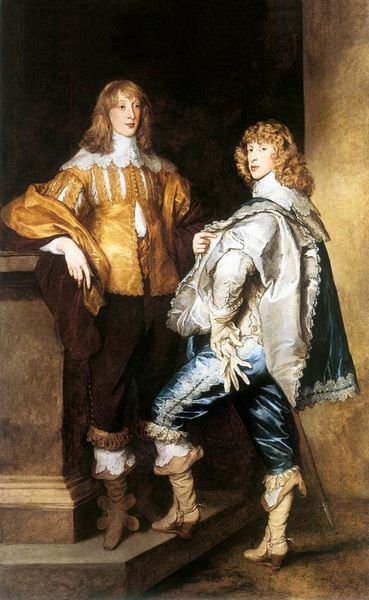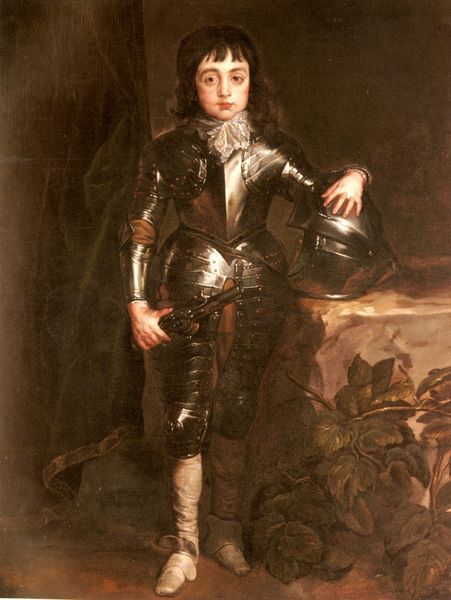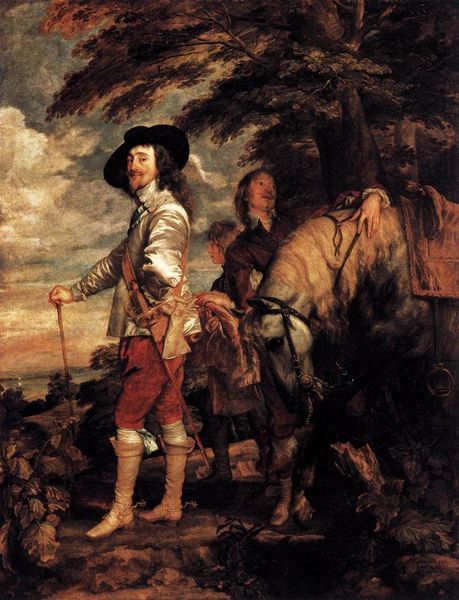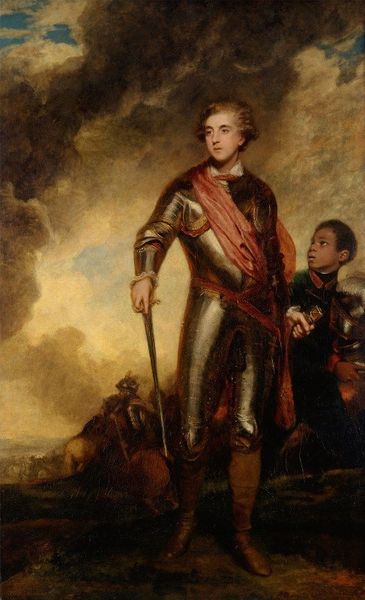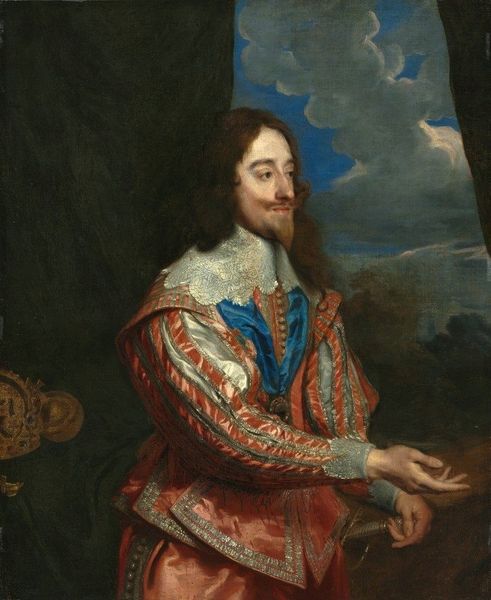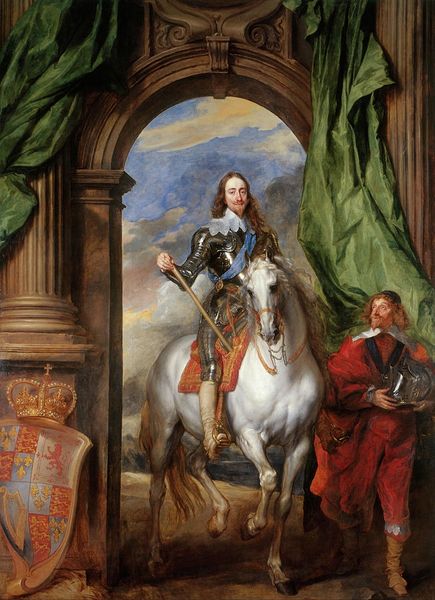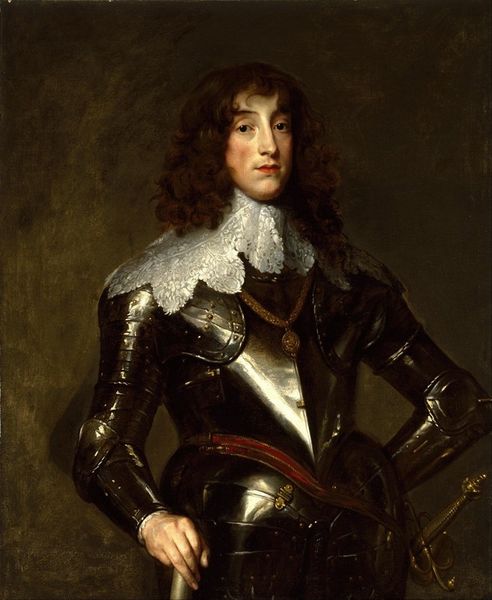
painting, oil-paint
#
portrait
#
baroque
#
painting
#
oil-paint
#
figuration
#
oil painting
#
history-painting
Dimensions: 129.8 x 153.6 cm
Copyright: Public domain
Curator: William Dobson painted this imposing “Allegorical Portrait of Charles II of England When Prince of Wales” in 1643, rendering it in oil paint. What strikes you first about this artwork? Editor: There’s an unsettling confidence in that gaze. The juxtaposition of youth and implied violence, signified by the war detritus at his feet, creates a very troubling picture, wouldn't you agree? Curator: Absolutely. The painting is propaganda, meant to portray a young prince ready to rule during a turbulent time. Notice how Dobson deploys baroque artifice; the richly colored fabrics and dramatic lighting create an idealized vision of monarchy and mask a complex, war-torn England. Editor: Precisely. Context is everything here. We see Charles positioned after a victory of sorts, above a decapitated figure in the left corner of the frame and surrounded by trophies. This suggests not only personal authority but also legitimizes monarchical power through the implied right to subjugate opposition. He represents himself as rightful heir despite very unstable socio-political context and challenges to his status, no? Curator: Precisely, and the image’s public function transcends the portrait itself. By displaying the heir apparent as both youthful and battle-ready, the artwork bolstered a flailing royalist cause, and it shaped a historical narrative for posterity through image politics and presentation. Editor: Which makes the presence of his younger brother, holding a helmet, so interesting. It is less about familial affection, of course, and more about the dynasty itself, and securing a sense of the family's continuing power. This visual reinforces patriarchal succession, reminding viewers of the stakes should anything happen to Charles. Curator: Right, it underscores the vulnerability of their claim to the throne while projecting an aura of inviolable destiny, not merely through visual spectacle but by leveraging cultural anxieties related to succession and power. Editor: Looking closely at it now I find the propagandistic approach and contextual clues extremely poignant, reflecting that the presentation of power through art cannot exist in isolation. Curator: A potent example of how images can perform active socio-political roles and historical meaning making!
Comments
No comments
Be the first to comment and join the conversation on the ultimate creative platform.
